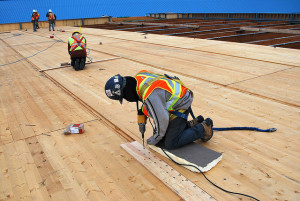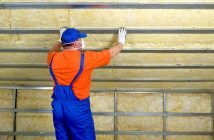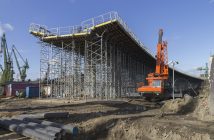New Zealand is missing a prime opportunity to combine its sustainable timber resources with an innovative manufacturing system to build faster and more efficiently
Daryl Patterson, Head of Operational Excellence at Lend Lease Australia, states Cross Laminated Timber (CLT) is that missing link.
CLT is an engineered wood system made from several layers of dimensional lumber boards, stacked crossways and bonded together.
Speaking at the recent Wood Processors & Manufacturers Association of New Zealand (WPMA) and Property Council New Zealand Tall Timber Buildings, Patterson questioned why, given New Zealand’s ample timber resources, there is not greater use of CLT in our construction sector.
“New Zealand is fortunate as all manufactured timber is made here. In Australia, we import manufactured timber as we don’t have the large timber resources to supply the raw product.
“You also have the design talent, a market that accepts timber and local manufacturers who have invested heavily in the technology to deliver and supply CLT.”
Patterson says he investigated CLT after seeing how 3D printing and robotic technology could be used to manufacture multi storey buildings.
“We had a design team look at this and the challenge was not the printer but the ink. We had to ask what will we make these buildings from. We needed a lightweight, strong, easy to manufacture, raw material.
“We looked at over 100 options and it kept coming back to timber: easy to construct, sustainable, durable and cost efficient.”
CLT provides the dimensional stability, strength and rigidity of alternative products at similar costs and can be digitally fabricated.
“This technology allows for mass customisation as the tools of design talk to the tools of production.
“We can now design and manufacture an entire apartment block in a warehouse, from a computer software program and robotics operated by one guy.”
Patterson cites London’s Graphite Apartments as an example.
“We looked first at the 2008 construction of the Graphite Apartments, in London. This was social and affordable housing where CLT was being used in very economically tight circumstances.
“They had to make it work and reducing cost was the rationale for using CLT. They could build faster, cheaper and break the height record for timber buildings by 50 per cent.”
Patterson believes the cost saving is partly due to the speed of construction and the ability to make the building water tight far earlier in the construction process than can be achieved with traditional materials.
Bringing that knowledge back to Australia, Lend Lease went on to build the Forté, Melbourne’s tallest timber building in 2013.
“What we found using CLT was, not only was it faster to build than a conventional building by 30 per cent, we also reduced truck movements to and from the site by 90 per cent.”
Patterson says other benefits included a quieter construction site, a smaller construction crew and significant thermal properties. He adds the feedback from buyers was overwhelmingly positive.
“Buyers were not concerned about what the building was built out of. They just wanted a nice, modern home and we were able to deliver that on time, at a reasonable price using CLT.”
Patterson also made reference to the recent, $150 million 5 King development in Brisbane, which is busting the scale for timber buildings at 52 meters high and features over 25,000 square meters of CLT.
“Brisbane is a tough market to sell commercial buildings in. We wanted to bring construction costs down to reduce rent and attract tenants.
“There is strong interest by investors in sustainable, well-designed, CLT constructed buildings as they are known to attract and retain tenants.
“These buildings offer a lower carbon footprint than other building materials and they are also great environments to work in.”
The implications for New Zealand, Patterson argues, are huge.
“In Christchurch, you have 1000 new buildings constructed with steel and concrete. These products are being imported from other countries when New Zealand is growing and manufacturing even better buildings in timber frame.
“CLT has the durability, strength, stability, seismic resilience, thermal performance, fire resistance, moisture management and vapour diffusion, healthy indoor environment, and design flexibility.
“New Zealand should champion this system and become the world leader in CLT-constructed buildings.”



